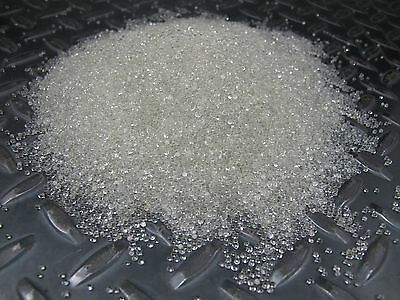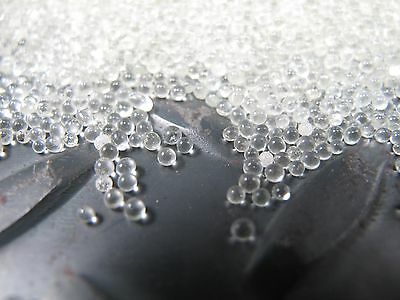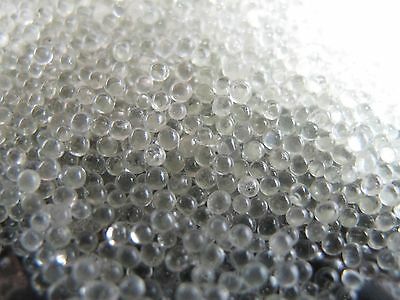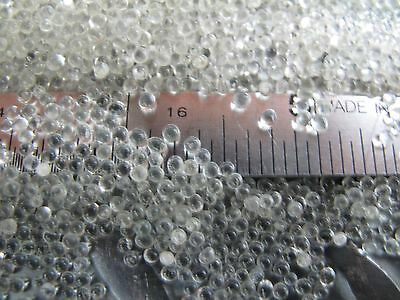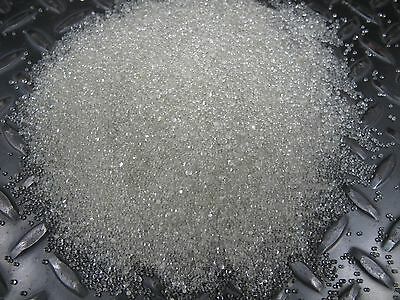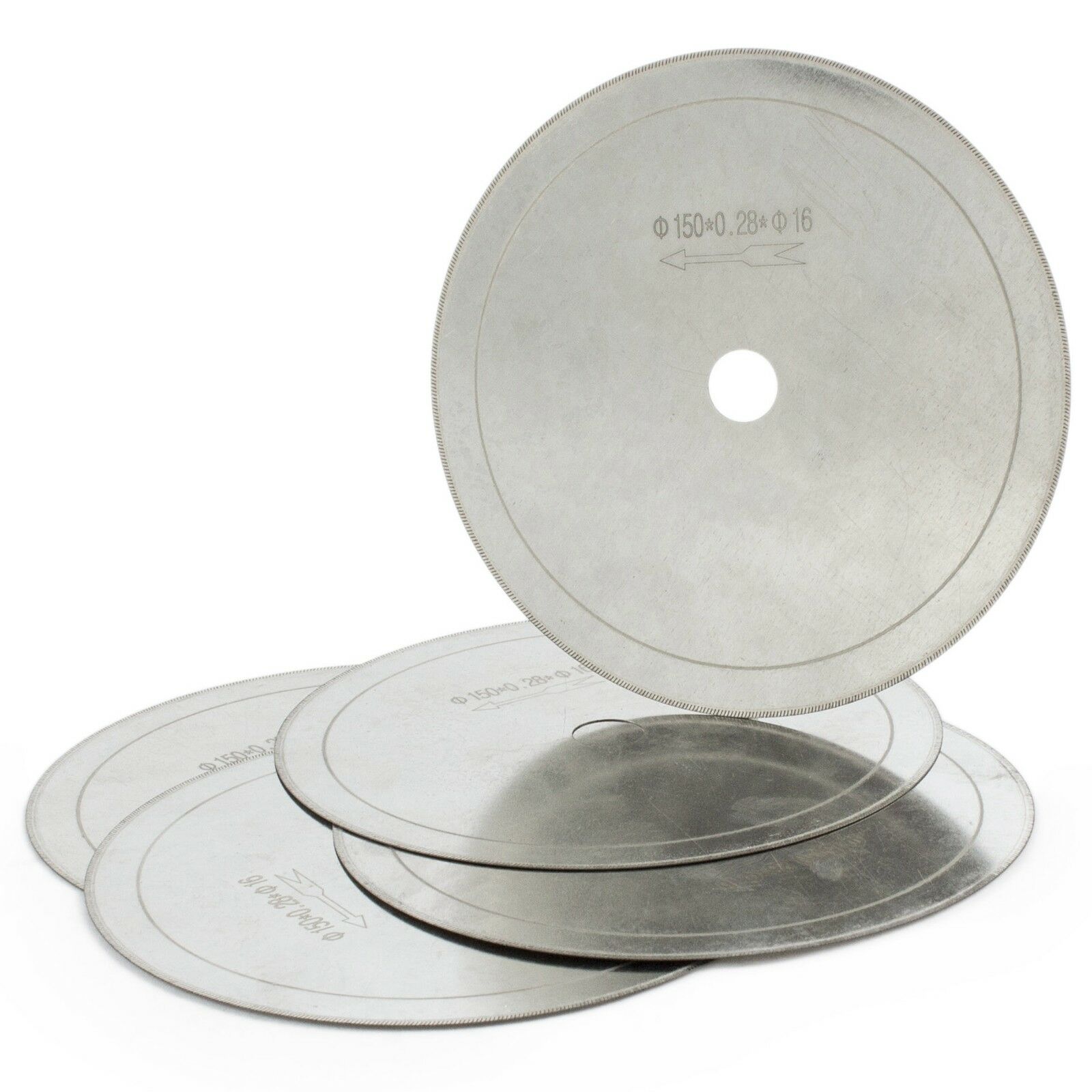Zmdi-facebook
Zmdi-twitter
Zmdi-youtube-play
Zmdi-instagram

The Abrasive Armory
An abrasive supply company for sand blasting, lapidary, tumbling, reborn doll, refractory
and more. We offer abrasives and supplies in the quantities you need, big or small.
Our
Shipping is FAST
! Usually arriving within 1 to 3 business days of shipment.
Glass Bead
MIL 1 (12-14)
10 LBS
Reborn Doll and Weighted Blankets
Not the quantity, grit, or type of you need?
We have lots to choose from!
Look inside our eBay store and navigate to the one you need!
Other products we sell
: White Aluminum Oxide, Silicon Carbide, Glass Bead, Steel Shot, Corn Cob, Walnut Shell, Boron Carbide, Nozzles, and more!
Look inside our eBay store!
Description and Use:
Reborn Doll and weighting applications
More Glass Bead Uses…
Glass
beads are available in a wide variety of sizes and are primarily used
in blasting cabinets for honing, polishing, peening, blending,
finishing, removing light burrs, and cleaning most light foreign
matter. Glass beads produce a much smoother and brighter finish than
angular abrasives. Glass bead blasting produces a clean, bright, satin
finish, without dimensional change of the parts or significant metal
removal. For delicate thin-walled parts and thin welds, peening with
glass bead material provides the right balance of stress relief without
over-stressing and causing damage. Glass beads can be recycled
approximately 30 times making them an extremely economical choice in.
On metal surfaces being restored, glass bead “resets” the surface
providing a new look. The user can change the bead size and technique
to achieve shinier or more matte finishes.
Selecting your grit
:
When
choosing a glass bead size, think about the “anchor pattern” that you
need for proper adhesion of the paint or finish material you will be
using. To illustrate the “anchor pattern”, imagine the dimples on a
golf ball, now imagine that you could change the size or depth of them,
this is your anchor pattern or mil profile, it reflects not only how
smooth your surface will be, but also that you will have the correct
surface for proper adhesion of your specific paint or other finish
material. Each grit gives you a different mil profile or anchor
pattern, however our MIL SPEC 8 medium grit (70-100) is our most
commonly requested glass bead.
Shine – If it is shine you are after, then the following are true…
1.)
Larger beads offer more shine – The larger the bead, the shinier the
work piece gets. Alternatively, smaller beads offer a more matte finish.
2.)
Lower pressures offer more shine – With glass bead, it is important to
run at the lowest possible pressure that allows the material to still
flow freely. This will increase the shine. Alternatively, the smaller
(finer) beads offer a more matte finish.
3.)
Less direct angles – To increase shine, try glancing blows that impact
at an angle. Straight on, direct, ninety degree angles reduce shine and
offer a more matte or satin finish.
Glass Bead is
NOT
Glass Abrasive
:
Glass Bead has unique characteristics that fit specific uses.
Do not confuse Glass Bead with Glass Abrasive
,
they both have their places, but are used for completely different
purposes. You will be disappointed if you expect the same results.
Glass Abrasive
is
angular and cuts like a knife slicing away layers, it also breaks down
quickly becoming less usable. Glass abrasive is used in situations
where the users want to cut layers of paint, finish, or rust away with
minimal risk of metal removal. It is also used when an economical
abrasive is needed that the user will have a difficult time recapturing
and reusing. Glass Abrasive is also used on log homes and other wood
surfaces. Glass abrasive is typically spent after 1 to 3 impacts (glass
bead should give you up to 30 impacts).
Glass bead
is a small round ball; therefore It is
not
the
best choice for stripping and removing material like heavy rust and
layers of paint. To do this, you want an angular media, the most common
being Aluminum Oxide, or others like Garnet, Glass Abrasive,
Starblast, or Black Magic Coal Slag, etc. Glass Bead is a surface
profiling media. It reduces stress to the surface being blasted, and
imparts a smooth bright surface that can then be painted or finished to
your requirements. Many professionals use an abrasive to cut away
the bad layers and then come back with a glass bead after to clean,
smooth, and profile the surface to their desired specs for painting or
finishing.
Glass Bead Grit Size Chart
Size
MIL SPEC
US Standard
Size Range
Size Range
Size Range
Screen
Inches
MM
Microns
1
MIL 1
12-14
.0661-.0555
1.68-1.41
1680-1410
2
MIL 2
14-20
.0555-.0331
1.41-.84
1410-840
3 or A
MIL 3
20-30
.0331-.0234
.84-.59
840-590
AA
20-80
.0331-.0070
.84-.18
840-180
AAA
25-45
.0283-.0171
.72-.43
720-43
4 or B
MIL 4
30-40
.0234-.0165
.59-.42
590-420
5
MIL 5
40-50
.0165-.0117
.42-.3
420-300
C
40-60
.0165-.0083
.42-.21
420-210
6 or D
MIL 6
50-70
.0117-.0083
.3-.21
300-210
AB
50-80
.0117-.0070
.3-.178
300-178
7
MIL 7
60-80
.0098-.0070
.249-.178
249-178
AC
60-120
.0098-.0059
.249-.15
249-150
8
MIL 8
70-100
.0083-.0059
.211-.15
211-150
AD
70-140
.0083-.0041
.211-.104
211-104
9 or G
MIL 9
80-120
.0070-.0049
.178-.124
178-124
H
100-140
.0059-.0041
.15-.104
150-104
10 or AE
MIL 10
100-170
.0059-.0035
.15-.089
150-89
AG
120-170
.0049-.0035
.124-.089
124-89
11
MIL 11
120-200
.0049-.0029
.124-.074
124-74
J
140-200
.0041-.0029
.104-.074
104-74
12
MIL 12
140-230
.0041-.0025
.104-.064
104-64
13 or AH
MIL 13
170-325
.0035-.0017
.089-.043
89-43
Technical Data and Physical Characteristics:
Shape
: round like a ball
Color
: clear/white
Density
: 2.5 g/cc
Specific gravity
: 2.45-2.5
Free Silica Content:
listed as 0, but always use proper respiratory protection when blasting.
Chemistry:
soda-lime glass
Chemically inert
no ferrous or undesirable residues
General Sand Blasting info – for your reference…
Particle Size Conversion Chart
: Use the following charts to cross reference different grit grading systems with their associated sizes.
FEPA Grit
Microns
Millimeters
Inches
ASTM GRIT
Tyler Mesh
US Sieve
5600
3 1/2
3 1/2
3 1/2
4
4750
4.75
0.189
4
4
4
5
4000
4
0.159
5
5
5
6
3350
3.35
0.133
6
6
6
7
2800
2.8
0.111
7
7
7
8
2360
2.36
0.094
8
8
8
10
2000
2
0.079
10
9
10
12
1700
1.7
0.068
12
10
12
14
1400
1.4
0.056
14
12
14
16
1180
1.18
0.047
16
14
16
20
1000
1
0.04
18
16
18
22
850
0.85
0.034
20
20
20
24
710
0.71
0.028
25
24
25
30
600
0.6
0.024
30
28
30
36
500
0.5
0.02
35
32
35
40
425
0.425
0.017
40
35
40
46
355
0.355
0.014
45
42
45
54
300
0.3
0.012
50
48
50
60
250
0.25
0.01
60
60
60
70
212
0.212
0.008
70
65
70
80
180
0.18
0.007
80
80
80
90
150
0.15
0.006
100
100
100
100
125
0.125
0.005
120
115
120
120
106
0.106
0.004
140
150
140
150
75
0.075
0.003
200
200
200
180
63
0.063
0.0025
230
250
230
220
53
0.053
0.0021
270
270
270
45
0.045
0.0018
325
325
325
Micro Grits
FEPA
Grit
Microns
Millimeters
Inches
ANSI Grit
Tyler Mesh
50
0.05
0.002
240
230
53
0.053
0.00211
240
44.5
0.0445
0.00177
45
0.045
0.0018
F
39.5
0.0395
0.00156
280
280
36.5
0.0365
0.00145
29.5
0.0295
0.00116
320
320
29.2
0.0292
0.00116
27.5
0.0275
0.0011
FF
360
22.8
0.0228
0.00091
18.3
0.0183
0.00072
400
400
400
17.3
0.0173
0.00069
16
0.016
0.00063
FFF
13.9
0.0139
0.00055
500
500
12.8
0.0128
0.00051
11
0.011
0.00043
FFFF
10.6
0.0106
0.00042
600
600
9.3
0.0093
0.00037
7.8
0.0077
0.0003
800
800
6.5
0.0065
0.00026
5.8
0.0058
0.00023
1000
1000
4.5
0.0045
0.00018
3.8
0.0038
0.00015
1200
1200
3
0.003
0.00012
1500
2
0.002
0.00008
2000
1.2
0.0012
0.00005
The difference between round and angular abrasives:
The
term “bead blasting” has come to be the generic term for media blasting
or “sand blasting”. This may be confusing to beginners when they are
choosing their grit, as they may assume that they should buy “glass
bead”. In fact, different abrasives are used for different purposes.
Glass bead is round, like a ball. It peens, refines, cleans, and shines
metal surfaces as it is used. Additionally, it removes burrs and preps
the work surface for paint or other coatings. While it will remove
small amounts of rust, paint, or other material, that is not its
intended purpose, nor is it an effective choice. If you need to smooth
out a surface, prep for paint, shine aluminum or other metals, or
remove burrs…then it is a great choice.
When the user needs
to strip paint, rust, or otherwise remove material from an object. They
should choose an angular abrasive like aluminum oxide, garnet, or
similar. These abrasives are shaped with sharp edges and will slice
away layers to get to the good surface. Glass bead, being round, will
repeatedly pound the surface.
Many commercial operations run
two cabinets, the first with a stripping abrasive like aluminum oxide,
and the second with glass bead.
As a starting point, every
cabinet deserves to have two things sitting next to it from the
beginning…Aluminum Oxide and Glass Bead.
Most users will be able
to accomplish most of their tasks with those two products. A good
starting point is white aluminum oxide 100 grit, and glass bead mil 8
(some call it 80).
How to choose an abrasive:
The
first question to ask is whether you are working inside of a cabinet
where the product can be contained and reused, or, are you out in the
open where you are unable to continually reuse it? If you are in a
cabinet, then you should choose a higher quality abrasive like Aluminum
Oxide, for your stripping needs. While it may be more costly up front,
it quickly becomes cheaper as you continually use it. If however, you
are sand blasting in a garage where you are unable to recover a bulk of
the product, then use something more economical.
In cases where
you are outside of a cabinet, but are able to recapture the abrasive
on a floor, tarp, or by other means, sweep it up and reuse it. But,
before you put it back into your system run it through an old window
screen to remove large debris.
The two most common problems with blast systems:
To small of a compressor.
When a system is not functioning correctly
,
their are typically two main culprits. The first is an undersized
compressor. Typically people assume that if they are running the
correct pressure, than it should work. However pressure is not the same
as volume. Every individual system requires a certain volume of air, or
CFM (Cubic Feet per Minute), to effectively pick up the abrasive and
flow it out the other end. Once you have the volume, than you can worry
about the pressure your abrasive works best at. In addition, you must
match your nozzle opening size to the amount of CFM your compressor can
put out (you can find charts online).
In general, purchase the largest compressor you can afford, you wont regret it 🙂
If
your stuck…To make the best of an undersized system, you may consider
the following: decrease your nozzle size, take breaks while blasting to
let the compressor catch up, choose light abrasives that are easy to
pick up.
Moisture in the system:
The
second most common blasting problem is moisture in the system. Every
running compressor condenses the moisture that naturally occurs in the
air and introduces it into your air tools, abrasive, or other
operation. It is a constant battle to combat this, especially in humid
environments. If you feel like the gun is “surging” in your hand, or
clogging, you probably have moisture. Additionally, if your compressor
is undersized, and continually runs while you are blasting without
stopping, it is constantly heating up, which in turn condenses moisture
at an even higher rate. Solutions to this problem include having a
large enough system that it is not running all the time without a break,
refrigerated air coolers or dryers (expensive), moisture removal
filters (inexpensive), and various types of home made copper or metal
snakes with drains, bolted to your wall (google it).
Most people
are not going to purchase a refrigerated air dryer, but if you are
handy, you can make a “snake” of copper with at least 50 linear feet
(the more the better) of pipe and bolt it to your wall right next to
your compressor. As the air runs out of the compressor, it will first
travel through this snake and cool rapidly as it touches the metal. A
higher percentage of the moisture will then collect at the bottom of
these pipes, rather then travelling on to your mainline and tool.
Additionally, there are many affordable moisture removal filters on the
market.
About our listings:
Shipping:
We
typically ship within one business day. The product than takes at least
1 to 3 business days to arrive, barring any problems in the air or on
the ro
ad.
About us:
We are a small family company. A great deal of thoughtfulness
and precision go into everything we do
.
We supply our abrasives in different quantities, so you can choose the right amount for your needs.
Problems:
Yup,
I’m a human too. Every once in a while I mess up, just like you. So
don’t be a mister angry pants turkey face. If I cause a problem, I will
fix it. We want your business forever.
Items scanned “delivered”-
If
a package has not arrived or is otherwise missing, we handle all
problems up to the point it is scanned “delivered”. If the post office
has scanned your item “delivered” and you still do not have it, we will
walk you through how to contact them. They will not communicate with
the sender on items marked “delivered” other than to tell us that they
were delivered. Again, we take care of all missing packages until it has
been scanned “delivered”, after that, you must contact the postal
service.
Our listings, adds, pictures, and write-ups
: The stuff we write is ours, don’t steal it, do your own work.
Pictures:
We always use pictures of the actual product in our add, but not necessarily the quantity.
SHIPPING PRICE is valid for
the United States of America,
PO/FPO destinations,
Guam, Puerto Rico, and the U.S. Virgin Islands.
International buyers welcome!

